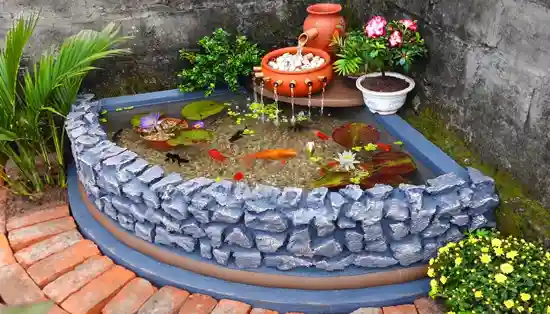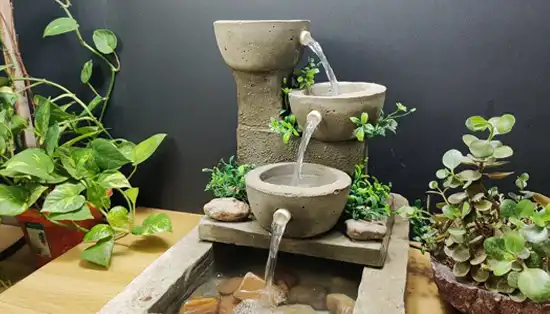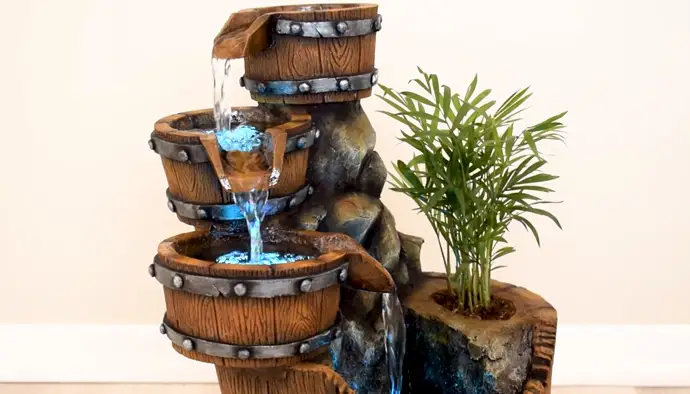Last Updated on January 8, 2023
Before sealing your concrete waterfall, you must prepare it properly. Drain the water feature and scrub the surface thoroughly. Using dishwashing liquid and water will remove dirt, mold, and mildew.
You can also use bleach to eliminate mold and mildew. After cleaning, allow the water feature to dry for two days before sealing it. Ideally, you should do this during a warm day with no forecast of rain.
Installing a concrete waterfall
Installing a waterfall is one of the most popular features in the backyard. It can add a unique element to an in-ground pool and jazz up outdoor entertaining. However, waterfall installation is not a simple task. Here are a few things to keep in mind before you begin the project.
First, make sure that you have a level surface for the waterfall to be installed on. You can create a level surface by putting down a liner. Next, stack the rocks that will make up the waterfall on the concrete slab. Once you’ve stacked the rocks, you should put a liner over it.
Before you begin, be sure to make a notch in the bond beam for the waterfall manifold. The notch should be about three-quarters of an inch deep. You must also make sure to allow two inches of space around the waterfall’s manifold, in order to accommodate its lip.
You should also lay the concrete slab six inches thick and level. This is important because it will help keep the waterfall level and prevent it from settling unevenly.
You should also be sure to lay the concrete slab at least two inches above the edge of the pond, so that the weight of the rocks can’t fall on the edge of the pond.
If you don’t have time to build a waterfall yourself, you can purchase a kit that contains the stones, pumps, filters, hose, and more. These waterfalls are easy to install, and don’t require extensive experience.
You’ll need to have access to water in your backyard in order for the waterfall to function and flow. There are also kits available that come with LED lights. The LED lights give the waterfall an extra spark.
Adding a waterfall edge can turn a simple concrete countertop into a stunning showpiece. Waterfall edges can be installed on either end of the countertop, or they can be cast as one piece.
A waterfall edge can also serve practical purposes, such as hiding plumbing and appliances. Furthermore, waterfall edges also enhance the look of the cabinetry.
Caulking or a mortar type solution
Choosing the right caulking product is important for a smooth and long-lasting finish. Brick mortar caulk, for instance, is designed to seal the joints between bricks and masonry. It helps prevent the walls from being damaged by water and other elements.
The right caulking product will also be able to withstand movement and stress. Avoid using caulking products that are made of low-quality materials. Follow the instructions carefully to get the results you want.
A mortar solution is made by mixing cement and sand with water and lime. The ratio should be 1 part cement to three parts sand. However, this ratio is often dependent on the brick type and the location. Water is also an important part of the mortar mixture.
Caulking is a solution that can be applied to concrete walls to prevent leaks. It can also be used to plug up holes in concrete. A good mortar will stick to the walls and not bleed. However, it’s important to make sure the material you’re using adheres to the walls without leaving gaps.
Adding cement to brickwork is another way to protect the concrete from the elements. Adding cement can also prevent rising damp. If the cement is not waterproof, it can lead to decay of the reinforcements of the concrete. In this case, you’ll want to use a cement mix.
Using DECK-O-SHIELD

If you’re considering using DECK-O-SHIELD to cover a concrete waterfall, you should be aware of the product’s limitations. Although it is a good sealant, it is not waterproof and can’t hide existing surface stains.
Therefore, it should only be used on clean, dry surfaces. It should be applied at the recommended rate and cleaned with warm water after application.
DECK-O-SHIELD is a water-based sealer that can be brushed or sprayed on masonry or natural stone surfaces. It won’t alter the color or tint of the surface after application and is completely transparent once dry.
It prevents stains and spills, protects against efflorescence and rust, and helps prevent salt staining. Additionally, it contributes to LEED credits by being a low-emitting product.
DECK-O-SHIELD is a water-based sealer that can protect natural stone, pool decks, and waterfalls. It provides a smooth matte finish and inhibits water penetration. DECK-O-SHIELD also prevents salt from penetrating the surface and causing stains and whitening.
How often should the sealant be reapplied on concrete around a waterfall?
The sealant should be reapplied every two years.
Sealant is an important element in waterfall maintenance as it protects the concrete from staining and other environmental hazards. It’s recommended that the sealant be reapplied every two years in order to maintain the waterfall’s appearance and structural integrity.
Is it necessary to seal the concrete waterfall at all?

Yes, it is necessary to seal the concrete waterfall. The sealant will help protect the concrete from weathering and fading, and it will also help keep the color of the waterfall consistent.
What are the most important things to remember when sealing a concrete waterfall?
There are a few key things to remember when sealing a concrete waterfall:
1. Make sure the surface is clean and free of debris before applying the sealant.
2. Apply the sealant in thin, even coats, using a brush or roller.
3. Wait for each coat to dry completely before applying the next one. 4. Do not apply the sealant in direct sunlight or on a hot day, as it will dry too quickly and may not be effective.



